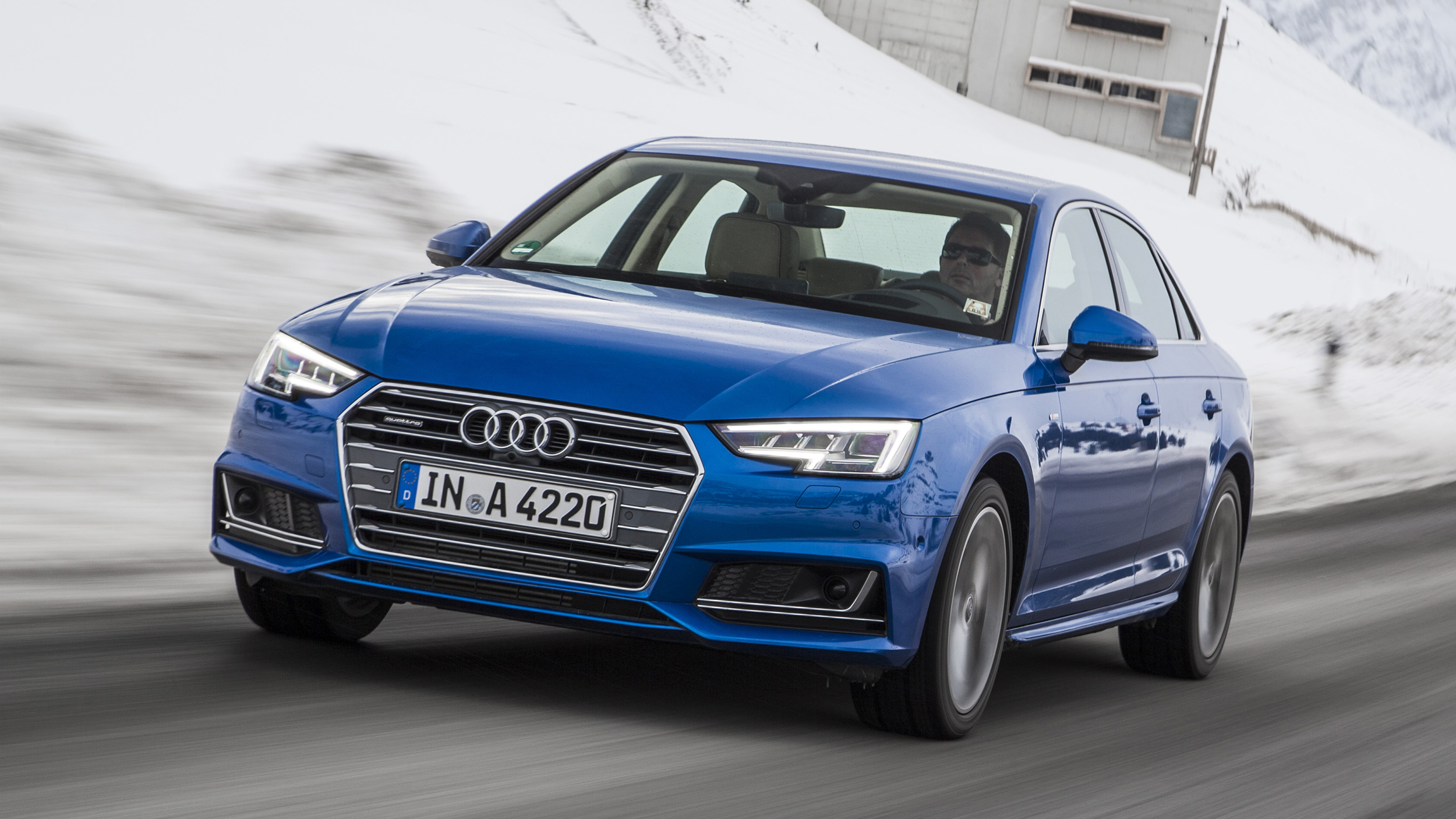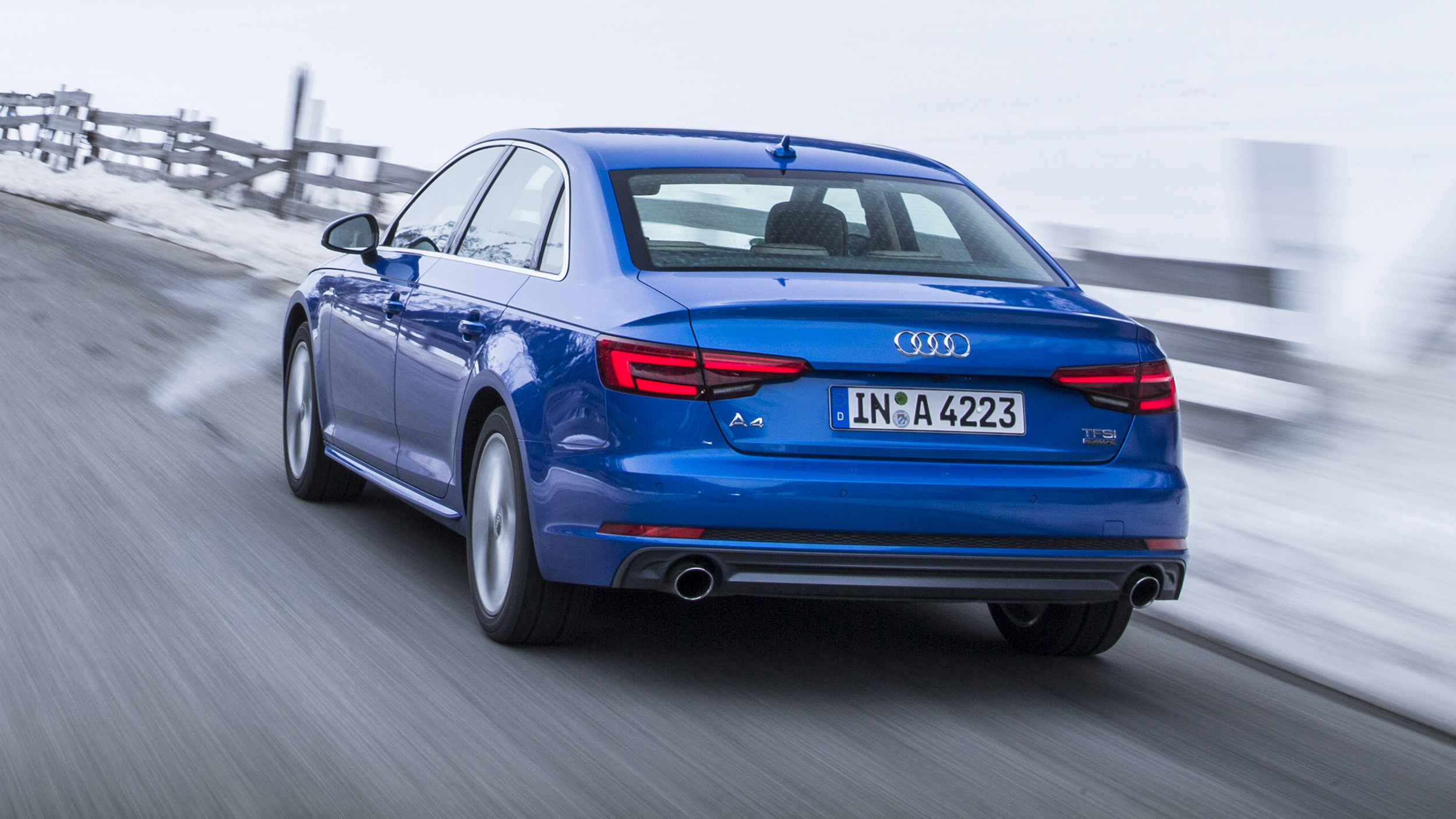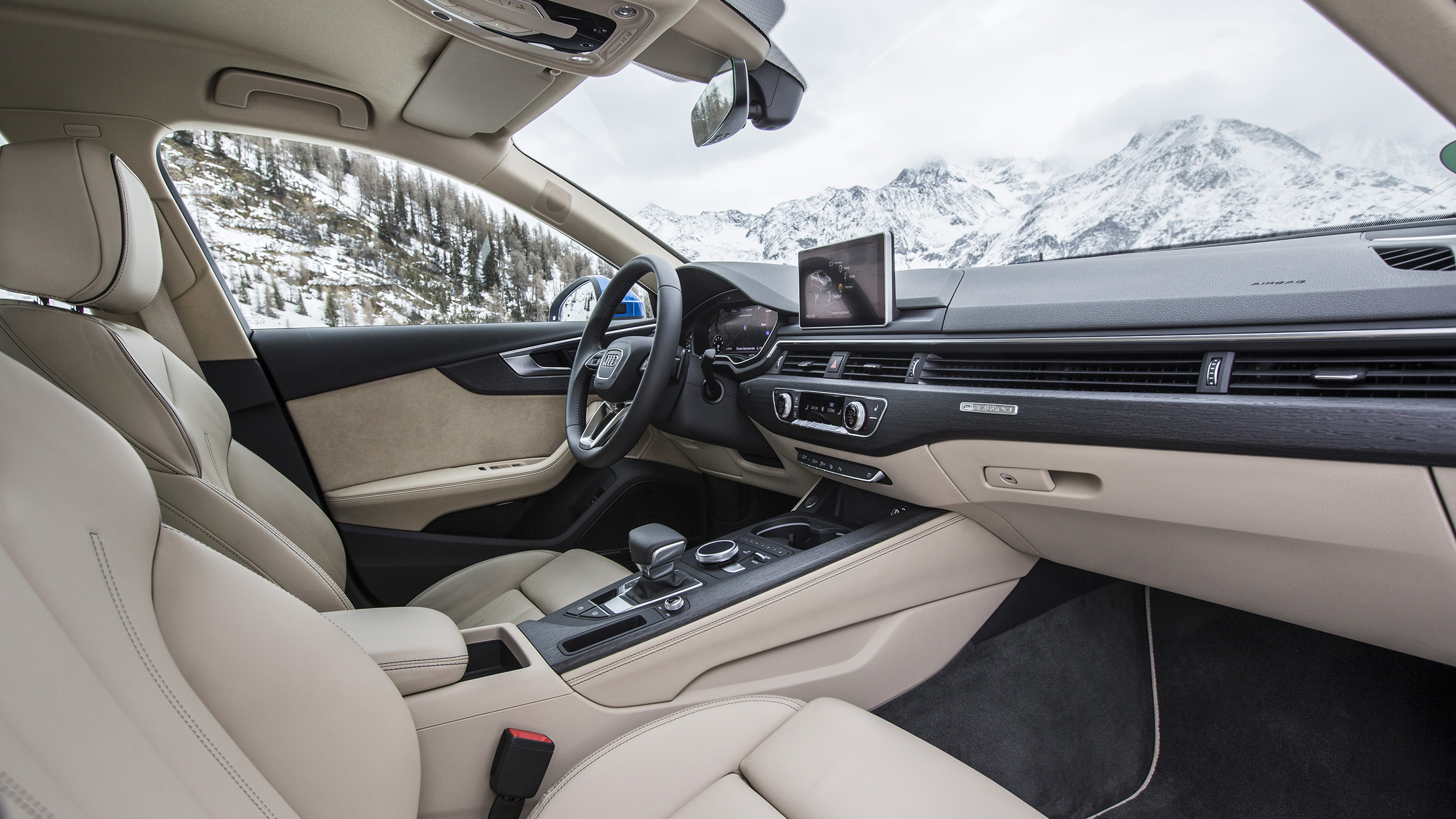
First drive: Audi's new, greener Quattro system
What’s going on here then?
This is an Audi A4 with the brand’s new Quattro system fitted. Quattro, you’ll be aware, is the four-wheel-drive system made famous by its pioneer, a sports car of the same name.
That car put Quattro on the map by slithering around forests to give the dull and functional world of 4x4 transmissions a dusting of glamour. And now, it’s evolved.
How is it different?
Audi has combined its two favourite model suffixes, Quattro and Ultra, the latter being what you’ll find fixed to its tax band-friendliest models.
In short, it’s a system that runs as front-wheel drive as much as possible, the rear axle only coming to life when road conditions or the driver’s desires deem it necessary. The benefits of 4WD when they're needed, without the burden on fuel economy when they aren't. It even weighs marginally less than a regular Quattro setup.
The Haldex system you’ll find on littler Audis (and numerous other cars) works in a similar way, but this is the first time Audi’s full-strength Quattro setup has offered this approach, opening it up to cars bigger than A3s and TTs.
How does it work?
The idea is it all goes on beneath you, without you ever really knowing how many wheels the transmission is sending power to. Despite the switchover coming via the complex whirring of clutches, the change is meant to be imperceptible.
And it’s all meant to happen predictively, rather than reactively. One hundred times a second, the car’s electronic brain assesses all manner of parameters: how much grip the wheels have, how flamboyant the driver’s inputs are, the outside temperature, and so on. It uses the resulting data to assess whether four-wheel drive is necessary, and will hook up the rear axle half a second before slip occurs.
Top Gear
Newsletter
Thank you for subscribing to our newsletter. Look out for your regular round-up of news, reviews and offers in your inbox.
Get all the latest news, reviews and exclusives, direct to your inbox.
If 4WD is activated, the power split between the axles varies to match what’s needed. As much as 100 per cent can go to the rear wheels.
Drifty goodness!
Not quite. This is for Audi’s more sensible, lower powered drivetrains, and as such, you won’t get it on RS models. It's all about safety and efficiency.
If you want to drive your 2.0-litre A4 like it’s a Quattro rally car, however, then prodding the stability control off will keep the car permanently 4WD and free of intervention, to best indulge your inner Walter Rohrl.
Keep the electronic nannies on, though (as you doubtless will), and the car is always in charge of how many axles you use. It’s a useful way to save fuel in town and on motorways, where in all but the slipperiest conditions, you only really need the front axle to keep you moving.
Does it work?
Our test route took us through deepest Austria, on dry but near-freezing roads, yielding an experience indistinguishable from a permanent Quattro system. The only way to tell how many wheels were working away beneath us was via an iPad we were conveniently given to show us the drivetrain’s activity (not something the customer will get, nor need).
An hour-long drive ended up split almost 50/50 between front- and four-wheel drive, but it included an uncommonly large portion of twisty back roads, upon which 4WD was always in use. Majoring on town and motorway roads - as most people’s driving time typically does - and you can expect much more time driven by the front axle only.
The big question: how much fuel will this save me?
Audi reckons its development miles averaged a saving of around five per cent, or 3mpg on the 2-litre petrol A4 we tried it on. It’s not going to make you rich overnight. But in the lifetime of a car, it’ll add up.
And it’s only the start. Future developments of the system will embrace more technology: it will talk to the satnav to foresee twists and turns in the road ahead, and use car-to-car communications to get a heads-up on traffic, slippery conditions, and other things which can pre-empt the drivetrain into picking its most appropriate setup.
It sounds complex. I just want to get in my car and drive places.
Audi knows this, and top of the whole to-do list was making the whole thing free of driver inputs, and with the car always feeling like it’s a proper Quattro. People pay more for 4WD to get off their drive in winter without pushing, and to get to work without nudging into a hedge, after all. This new Ultra-infused Quattro will still do that, it’ll just cost you less in fuel when the frost thaws and four-wheel drive is unnecessary.
Fine. So what can I have it on?
It arrives in a drip-fed manner, debuting on the new A4 Allroad, before appearing on the A4 and the all-new A5 and Q5. It arrives initially on 2.0-litre petrols, with diesels to come. It won’t be an option, rather it will replace the previous, permanent Quattro system.
In the future, expect it on every Audi with a longitudinally mounted engine (basically, A4 or bigger) and without a big powered engine or sporting pretensions. Those, Audi promises, will remain fully focused on performance. Because buying an RS6 or R8 has never been about looking after the pennies…
Featured







